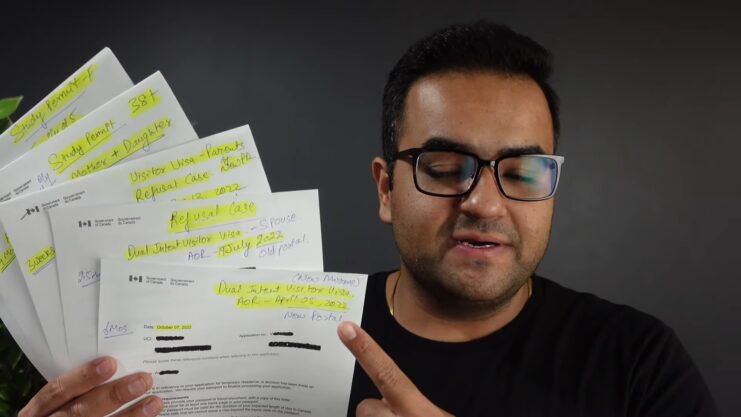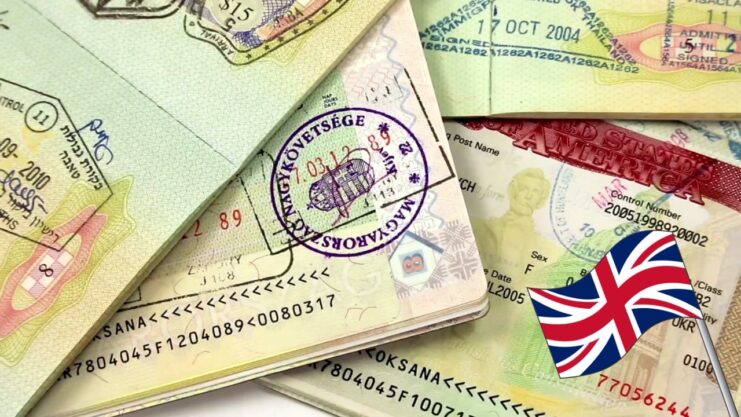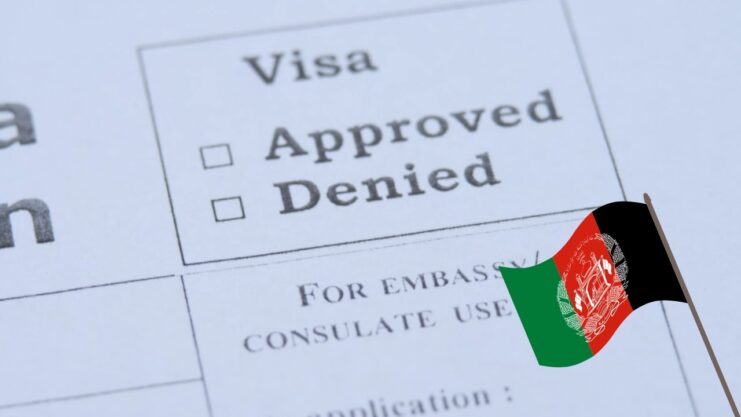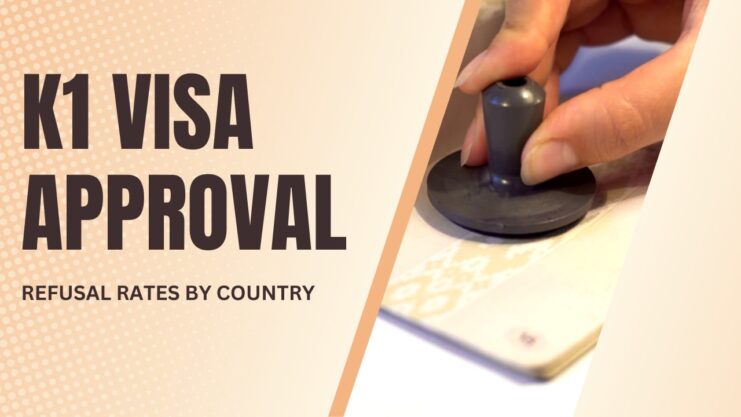In the globalized world that we live in today, more people than ever are finding love across borders. International couples often find themselves navigating a complex web of immigration policies, including the K1 visa.
It is commonly referred to as the “fiancé(e) visa,” which allows the foreign partner of a U.S. citizen to enter the United States for the purpose of marriage. In this blog post, we will delve into the K1 visa approval and refusal rates by country, exploring the factors that influence these rates and providing a detailed breakdown of the process.
The K1 Visa Application Process
The K1 visa process consists of several stages, each with its own set of requirements and potential pitfalls. Understanding these stages is crucial to maximizing your chances of approval and successfully navigating the immigration system.
Eligibility Criteria
Before applying, both partners must meet certain eligibility criteria:
- The U.S. citizen must be a legal resident of the United States.
- Both partners must be free to marry (not currently married to someone else).
- The couple must have met in person within the last two years, with few exceptions.
- The foreign partner must not have a criminal record or pose a security risk.
Filing the I-129F Petition
The first step is for the U.S. citizen to file an I-129F petition with U.S. Citizenship and Immigration Services (USCIS). This petition is essentially a request for the foreign partner to be granted a K1 visa. The USCIS will review the petition, verifying the couple’s eligibility and ensuring that they meet all the necessary requirements.
The National Visa Center and Consular Processing
Once the I-129F petition is approved, the case is transferred to the National Visa Center (NVC). The NVC assigns a case number and forwards the case to the U.S. embassy or consulate in the foreign partner’s home country.
The foreign partner will then undergo consular processing, which includes submitting a visa application (Form DS-160), undergoing a medical examination, and attending an in-person interview at the embassy or consulate.
The K1 Visa Interview
This interview is a crucial part of the process, as it is the final step before a decision is made on the visa application. During the interview, the consular officer will ask questions to verify the couple’s relationship, intentions to marry, and plans for the future. The officer may also ask about the foreign partner’s background, including any criminal history or previous immigration issues.
As you examine the K1 visa approval and refusal rates by country, you might be interested in learning about the immigration opportunities in Australia; check out our comprehensive guide on the Skilled Occupation List (SOL) for detailed information on eligibility and the application process.
Factors Influencing Approval and Refusal Rates by Country

K1 visa approval and refusal rates vary by country, with some countries experiencing higher approval rates than others. Several factors influence these rates:
1. Fraud and Misrepresentation
Unfortunately, some individuals attempt to use the K1 visa as a means to enter the United States under false pretenses. This fraud can result in higher refusal rates for certain countries, as consular officers may scrutinize applications more closely to detect potential fraud.
2. Cultural Differences and Relationship Evidence
Couples from countries with significant cultural differences from the United States may face additional challenges in proving the legitimacy of their relationship. Providing substantial evidence of a genuine relationship is essential in obtaining a K1 visa.
This may include photographs, correspondence, travel records, and other documentation that demonstrates the couple’s ongoing relationship and commitment to one another. In some cases, cultural differences can lead to misunderstandings or misconceptions about the relationship, resulting in a higher refusal rate.
3. Economic Factors
Consular officers may consider the foreign partner’s financial stability when making a decision on the K1 visa application. Applicants from countries with weaker economies or high unemployment rates may face greater scrutiny in this regard.
Additionally, the U.S. citizen petitioner must meet the minimum income requirement to demonstrate that they can financially support their foreign partner, which can also influence the approval rate.
4. Previous Immigration Issues
If the foreign partner has had previous issues with the U.S. immigration system, such as overstays, deportations, or other violations, their K1 visa application may be more likely to be refused. The refusal rate may be higher in countries where such issues are more prevalent.
Approval and Refusal Rates: A Country-by-Country Breakdown

Below, we provide a detailed breakdown of K1 visa approval and refusal rates for various countries. This information can offer valuable insights into the likelihood of success for applicants from these nations.
Please note that these rates are subject to change and should be considered as a general guideline. Each case is unique, and individual approval or refusal will depend on the specific circumstances of the couple and their application.
Countries with High Approval Rates
Canada
With a shared border, language, and similar culture, Canadian K1 visa applicants enjoy a high approval rate of around 95%. The strong economic ties between the two countries also contribute to this high success rate.
United Kingdom
The UK has a strong historical and cultural connection with the United States, which contributes to a high approval rate of approximately 94%. The common language and similar customs make it easier for couples to provide evidence of their relationship.

Australia
Australian K1 visa applicants also enjoy a high approval rate, averaging around 93%. With a shared language and strong economic ties, couples from Australia tend to face fewer challenges in obtaining a K1 visa.
Countries with Moderate Approval Rates
Philippines
The Philippines is one of the largest sources of applicants, and while the approval rate is relatively high at around 85%, it is not as high as some other countries. This may be due in part to cultural differences and potential issues related to fraud.
Brazil
Brazilian K1 visa applicants have a moderate approval rate of approximately 83%. Factors such as economic disparities and cultural differences may contribute to the lower success rate compared to countries with higher approval rates.

Nigeria
With the approval rate hovering around 80%, Nigerian applicants face more challenges in obtaining their visa. This lower rate may be attributed to economic factors, as well as concerns about fraud and misrepresentation.
Countries with Low Approval Rates
Ghana
The applicants from Ghana experience a lower approval rate of approximately 65%. This lower rate may be due to a combination of economic factors, cultural differences, and concerns about fraud.
Afghanistan
The approval rate for applicants from Afghanistan is around 60%. This lower rate may be attributed to ongoing security concerns, cultural differences, and a challenging economic climate.

Yemen
Yemeni applicants face significant challenges, with an approval rate of just 55%. Factors such as ongoing conflict, security concerns, and a fragile economy contribute to this low success rate.
Final Words
The K1 visa approval and refusal rates vary significantly by country, influenced by factors such as cultural differences, economic conditions, and concerns about fraud. Couples seeking it should be aware of these factors and work diligently to provide substantial evidence of their genuine relationship and intentions to marry.
While the approval rates by country can offer some insight into the likelihood of success, it is important to remember that each case is unique, and individual outcomes will depend on the specific circumstances of the couple and their application.
By understanding the process, eligibility criteria, and potential challenges, couples can increase their chances of success and embark on their journey towards a life together in the United States.
Remember that knowledge is power, and being well-informed about the whole process and its intricacies can make a significant difference in the outcome of your application. As the saying goes, “forewarned is forearmed,” and this is certainly true when navigating the complex world of U.S. immigration.

